Note: This website was automatically translated, so some terms or nuances may not be completely accurate.
From buyer to partner. "Sustainable Customers" are transforming business!
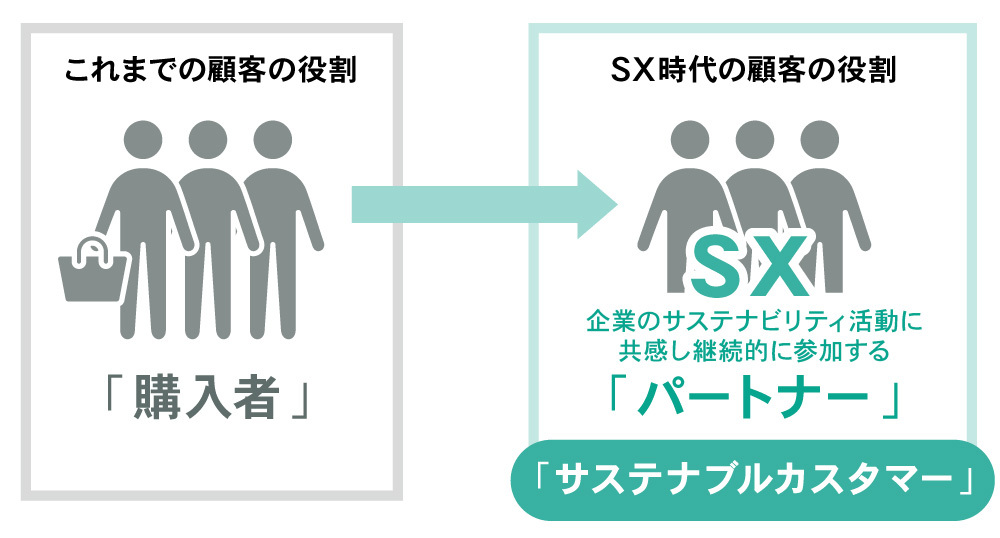
The keyword "sustainable" is gaining attention across all businesses as we strive to realize a sustainable society.
However, many companies struggle with the challenge: "How can we balance social contribution activities for a sustainable society with business viability?"
This article introduces the concept of 'Sustainable Customers'—a new customer segment companies should target—alongside data revealed by Dentsu Inc.'s proprietary research.
What is this new marketing framework that directly links "collection and recycling activities" between companies and consumers to corporate business growth? Minako Hotta from Dentsu Inc.'s Sustainability Consulting Office delves into it!
Downloadthe ebook for this survey here:
Do! Solutions Sustainable Customer Survey Digest Report Download
Related Article:
What is the "Sustainable Customer" holding the key to realizing the circular economy?
What is the "Sustainable Roadmap," a Guide Tool for Sustainability Management?
<Table of Contents>
▼The Next Concept Beyond Loyal Customers: What is a "Sustainable Customer"?
▼Connecting "Arterial Industries" and "Venous Industries"! The Role of Sustainable Customers
▼20% of Consumers Are Already "Sustainable Customers"
▼Toward Building Platforms Where Goods and Information Circulate!
▼Consumers Are Partners Who Help Drive the Circular Economy
The next concept beyond loyal customers. What is a "Sustainable Customer"?
Many companies implement social contribution activities—such as environmental initiatives, donations, and volunteering—as part of their CSR (Corporate Social Responsibility). Most of these are viewed as "extra" activities separate from business operations or growth.
However, the sustainable management currently gaining attention is fundamentally about
incorporating sustainability elements, including social contribution activities, directly into business operations and management strategy itself.
.
Considering ESG (Environmental, Social, and Governance) factors not merely as social contribution, but as drivers for growing one's own business over a long time horizon, is essential for achieving truly sustainable initiatives.
The key to this, in my view, lies in the customer segment I'm introducing today: the "Sustainable Customer."
Currently, many companies focus their marketing on "loyal customers." Loyal customers are a crucial customer segment who have strong affection for the company or brand, support sales of products and services over the long term, and bring stability to management.
Sustainable customers, you could say, represent the concept positioned "next" to loyal customers.
To explore what kind of customers support sustainable management, we conducted a "Sustainable Customer Survey" targeting 1,200 consumers.
*See the end of the article for survey details
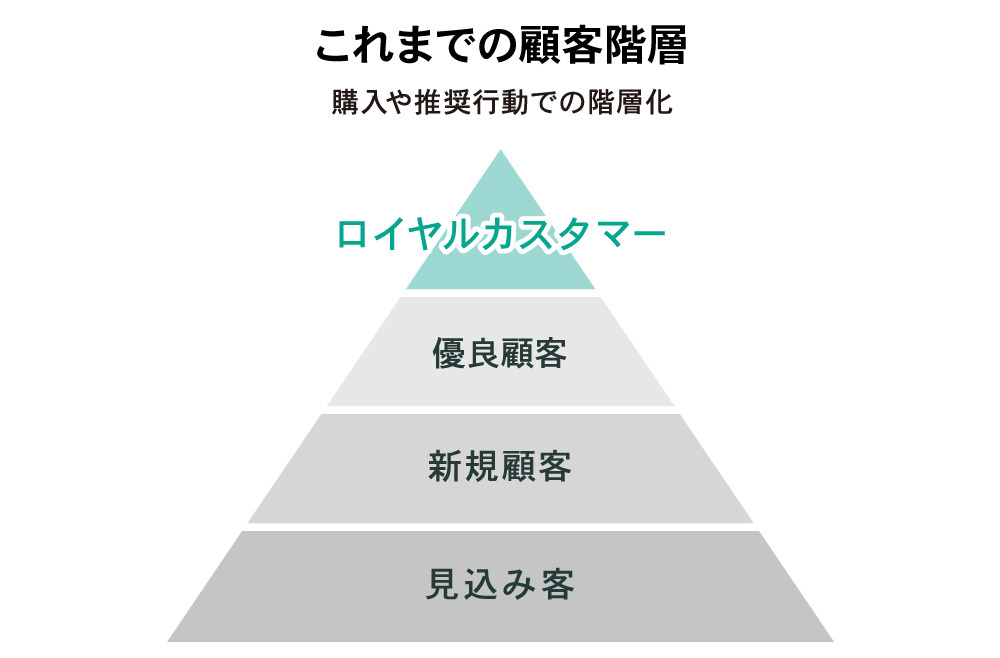
The pyramid above represents a commonly used marketing framework. It illustrates how companies approach a large pool of potential customers through advertising, acquire new customers from this group, convert some into repeat-purchasing loyal customers, and ultimately cultivate a core of loyal customers who empathize with and support the company or brand.
This approach aims to increase "LTV (Lifetime Value)" by having a single customer repeatedly use products or services over the long term, rather than simply selling to a large number of customers and ending there.
This time, we systematized customer segments using a four-quadrant graph. In addition to the "Purchase Continuity" axis, which indicates the level of loyalty to such companies and brands, we added the "Recovery/Recycling Participation" axis as an example demonstrating consumers' sustainability awareness and participation in related activities, considering the current situation.
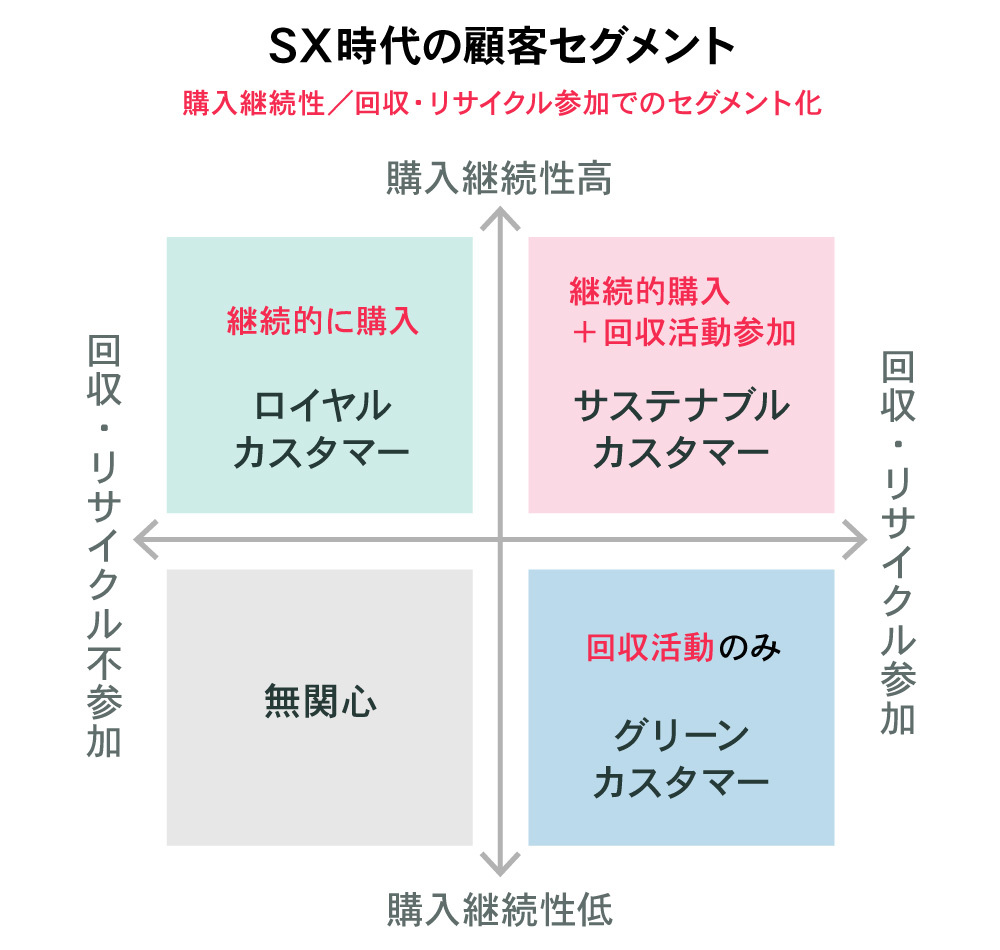
- Indifferent Segment
- Loyal Customers
- Green Customers
- Sustainable customers
Here, "royal customers" are defined as those who make repeat purchases, while "green customers" are defined as those who only participate in collection and recycling.
The group we want to focus on is "customers who make repeat purchases and participate in collection and recycling." We have positioned these customers as the next generation of new customers, "sustainable customers."
By increasing the number of these sustainable customers, it is possible to accelerate sustainable management by transforming the business model into SX (Sustainability Transformation). To achieve this, we believe that the marketing framework itself must also undergo SX.
Connecting "Arterial Industries" and "Venous Industries"! The Existence of Sustainable Customers
Traditional companies focused their activities on "manufacturing products and selling them to consumers." In contrast, sustainable management expands the scope of corporate activities beyond just manufacturing and selling to include "recovery and reuse."
The goal is to realize what is known as the circular economy.
In the circular economy, manufacturers that produce goods and distributors/retailers that sell them to consumers are considered "arterial industries," while companies that collect and recycle used items are seen as "venous industries."
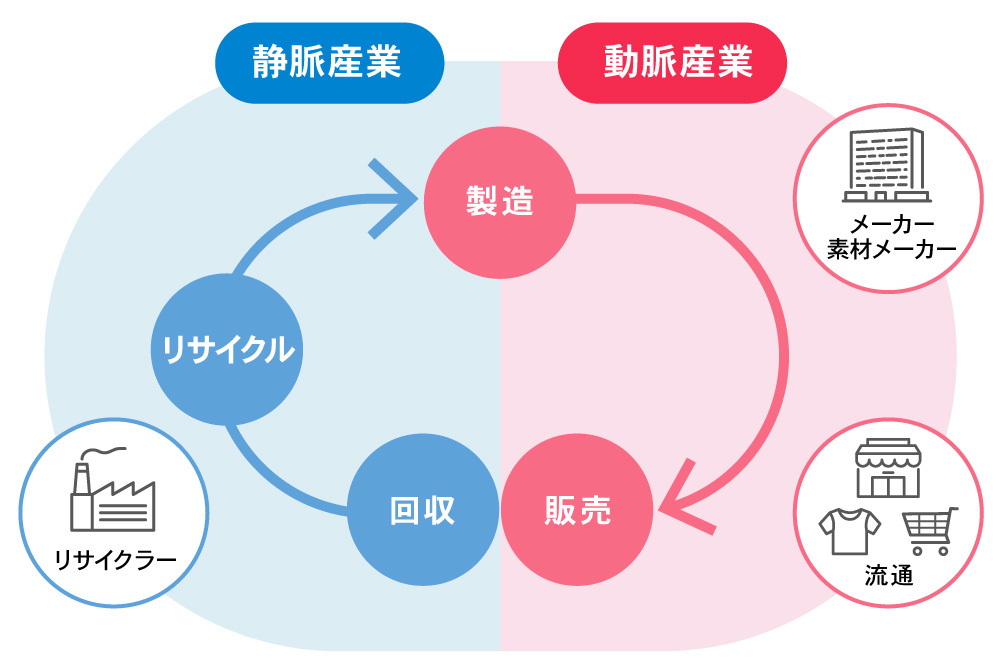
Cooperation between these two industries is crucial, but keeping the cycle of "selling" and then "recovering" products moving requires more than just industry and corporate effort. It demands customer action (participation) – the act of recycling purchased goods to the vein industries after use.
The customer who plays a vital role in keeping this cycle turning is the sustainable customer, connecting the artery and the vein.

Many companies in the arterial industries—manufacturing, distribution, and retail—are already implementing circular economy initiatives, such as placing collection boxes at supermarkets and drugstores. However, challenges exist. Broadly speaking, there are three:
① Cost challenges
The costs associated with collection and recycling are significant.
② Revenue Generation Challenges
Collection and recycling are not leading to "next purchases" or similar actions, resulting in a lack of monetization.
③Challenges with Collection Networks and Consumer Participation
A collection network from consumers has not been established, and collection volumes are insufficient. Furthermore, no data regarding collection is being obtained.
So, what approach should we take toward sustainable customers to solve these challenges?
Twenty percent of consumers are already "sustainable customers"
Here, we will examine whether sustainable customers should truly be considered a business target. To begin with, what percentage of the entire consumer population are sustainable customers?
Based on responses from consumers, we classified them into the four segments (customer groups) mentioned earlier. Consumers fitting the sustainable customer profile accounted for 22% of the total.

There are more sustainable customers (22%) than loyal customers (20%) or green customers (19%). Twenty percent of consumers are already sustainable customers. This is a volume that can be considered a sufficient target for marketing.
Looking at gender and age groups, the percentage of sustainable customers among teenagers is extremely high. This is as expected, as "the younger generation is likely to have a high percentage of sustainable customers due to the influence of SDGs and education for sustainable development." On the other hand, it is also noteworthy that sustainable customers account for about 20% of all other generations.
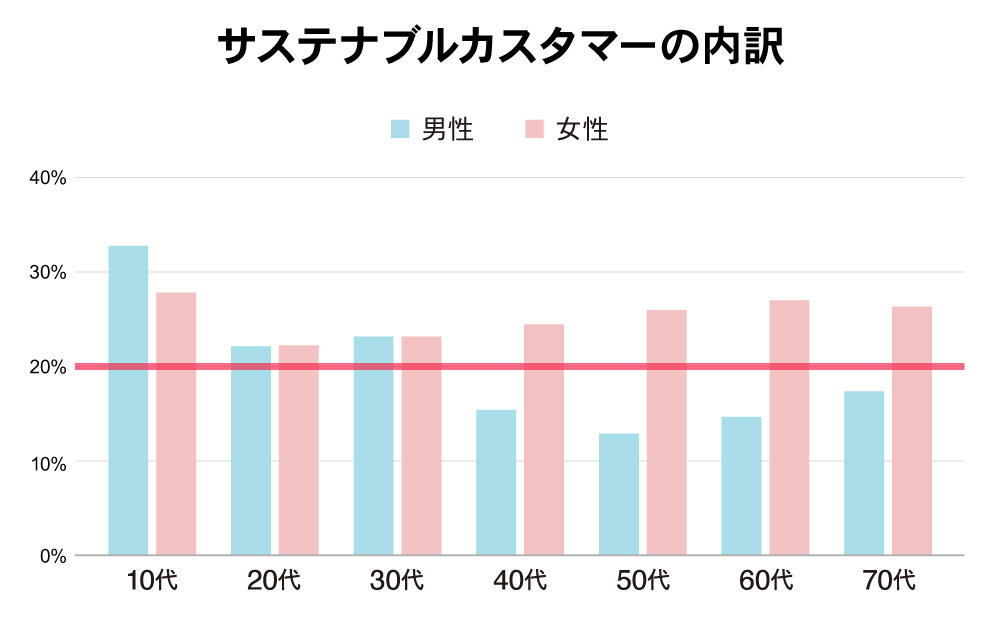
Next, let's examine who these sustainable customers are.
A major finding in this survey is the large number of respondents who "choose environmentally friendly products even if they cost more." Particularly among sustainable customers, it became clear that they place significantly greater emphasis on "being sustainable" compared to other customer segments, even over price.
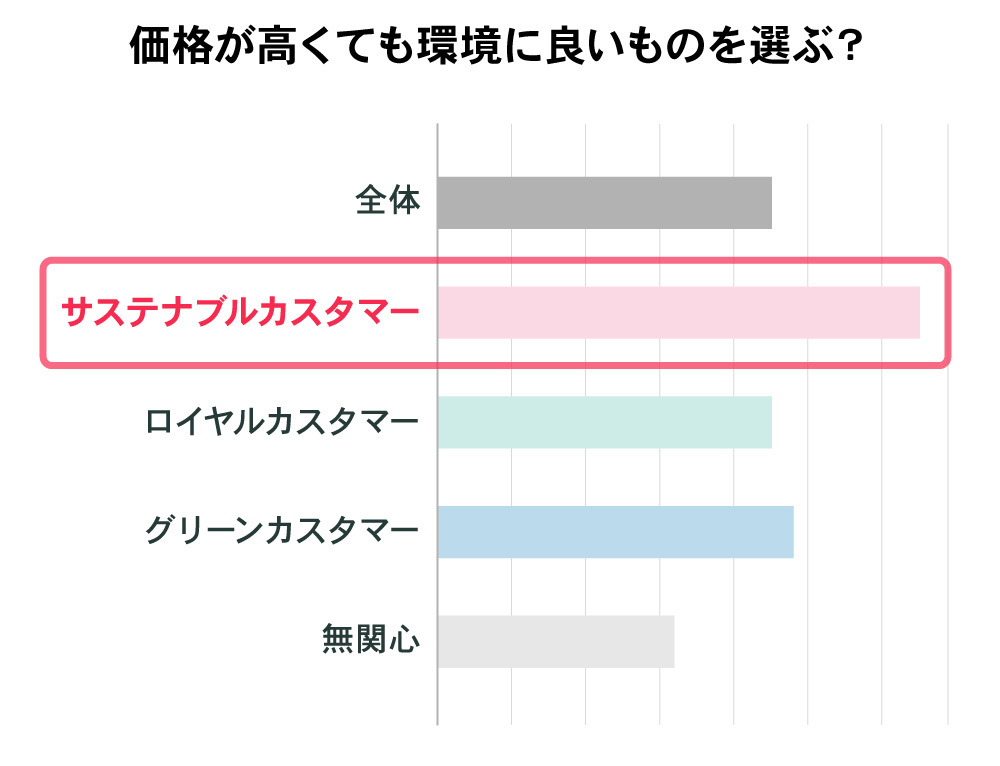
This is a highly suggestive result. Consumers may be more inclined to choose "sustainable products" than many companies realize.
With rising global raw material and fuel costs, and considering the shift towards sustainable products and packaging incorporating recycled plastics and bioplastics, product unit prices are likely to remain higher for the foreseeable future.
However, by targeting and marketing to sustainable customers who truly understand the social significance, stable business viability should be achievable.
uring measures to turn consumers who are currently indifferent, loyal customers, or green customers into sustainable customers will also become important.
Toward building a platform where goods and information circulate!
Many companies are already engaged in some form of collection and recycling activities. However, as mentioned at the beginning, in most cases, these activities remain "social contribution activities that are separate from business viability and growth."
Therefore, Dentsu Inc. is currently building a "Circulation Platform" that combines "collection and recycling" with "sales promotion," leveraging the power of sustainable customers.
Our goal is to build a social contribution infrastructure that is easy for consumers to participate in, through the "circulation of goods" and the "circulation of information."
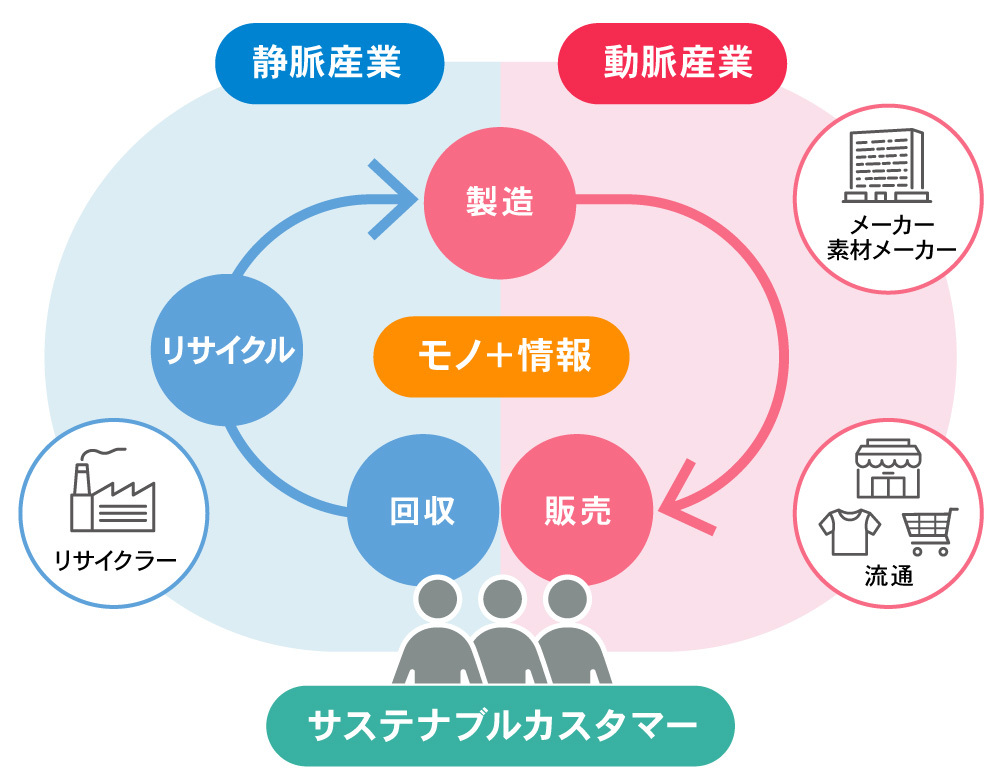
In the circular platform currently undergoing proof-of-concept testing, a smartphone app guides users to deposit used products and packaging into collection boxes installed at stores.
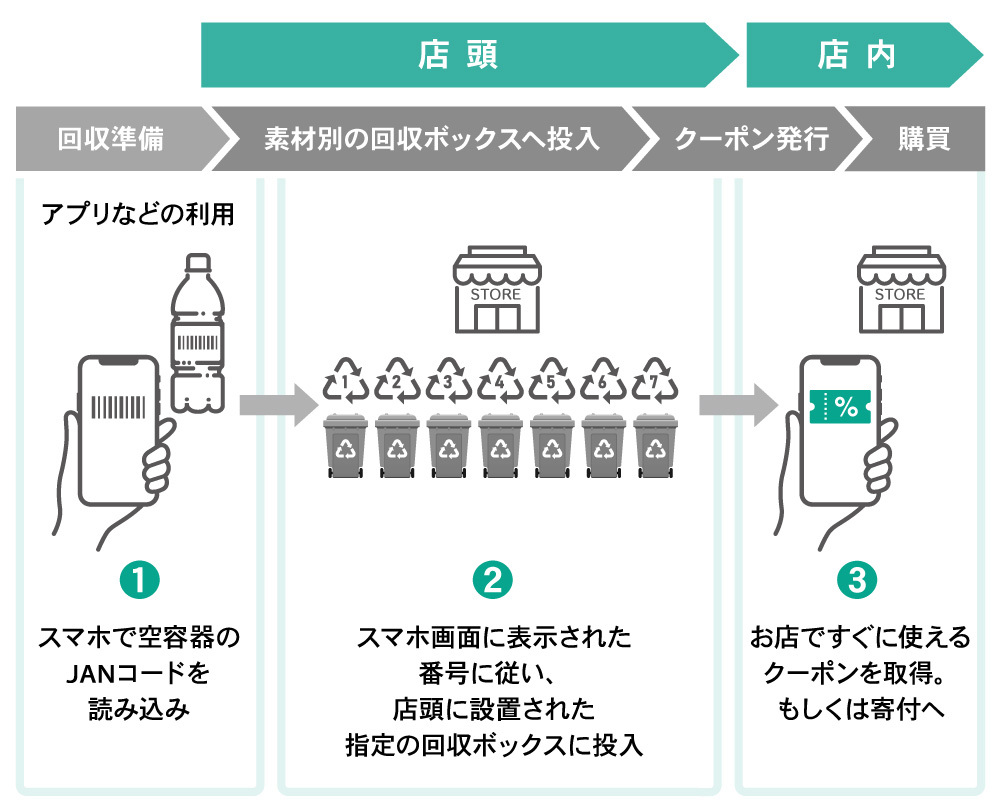
Currently, the in-store collection and reuse implemented by companies mainly relies on analog methods, presenting challenges in achieving sufficient data integration and analysis. By digitally transforming this collection and reuse system through a smartphone app, various possibilities emerge.
To address the aforementioned corporate challenges, the circular platform is designed with the following considerations:
〈Key Features of the Circular Platform〉
- A platform model enabling multiple companies to "ride together" to reduce costs.
- Enhancing CX (Customer Experience) during "returns" to encourage participation and drive "next purchases."
- Acquiring "return" data and utilizing it alongside "purchase" data for marketing.
- Nurturing sustainable customers and expanding their base.
The most critical element is designing the CX for collection. We must provide an appealing CX that motivates consumers to actively and continuously keep the "cycle of circulation" turning.
For example, before consumers deposit empty containers like shampoo bottles into store collection boxes, they scan the JAN code (barcode) using a smartphone app. Once the system confirms the container is collected, a coupon for that shampoo is instantly issued and can be used immediately in-store. This approach—issuing a coupon upon collection of used items—naturally encourages the thought "It's gone, so I'll buy more," fostering a continuous purchasing cycle.
Beyond just the same product, coupons for new items, related products, or higher-tier brands can be issued to encourage upsells and cross-sells. Points can also be awarded. These incentives can be customized based on the consumer's collected items and recycling history.
However, issuing coupons and points requires funding, and relying solely on this approach becomes a long-term burden for companies. This is where CX design using "non-monetary incentives" deserves attention.
〈Monetary Incentives〉
- Earn points or coupons by participating in collection activities
〈Non-monetary Incentives〉
- You can learn about the amount collected and the results of the collection
- You will be informed of the amount of CO2 reduced
- Receive information about your past recycling volume and your approximate national ranking
This survey revealed an interesting trend in response to the question, "What kind of services would encourage you to participate in collection and recycling activities?" While "monetary incentives" like coupons or points ranked highly overall, sustainable customers showed a significantly higher tendency than other segments to cite "non-monetary incentives" as motivators for participation.
If sustainable customers can be encouraged to participate in recycling without relying on coupons or points, collection and recycling activities should become truly sustainable initiatives for companies as well.
Furthermore, if consumers routinely use the app, enabling the circulation of "goods (products)" and "information (data)" on the platform, data acquisition becomes possible at every contact point. For example, targeted advertising to sustainable customers on the circular platform would also become feasible.
In this way, digitally transforming collection and recycling activities and linking them to sales promotions reveals new business opportunities. Companies themselves should also see a shift in mindset, aiming to create products based on the circular economy from the very stage of product development.
Consumers are partners in driving the circular economy!
When considering sustainable management, building new relationships with sustainable customers holds significant importance for companies.
Customers, who were previously just purchasers, are now seen as "partners" who share the company's purpose and sustainability strategy and help drive the circular economy together.
To achieve this, it is vital to clearly communicate the company's purpose and sustainability strategy to consumers and gain their empathy.
What kind of sustainability are we aiming for? How do we plan to work towards it?
Then, we must convey that we want to collaborate as partners, saying, "That's why we need your help."
Without this explanation and mutual understanding, building a lasting partnership will be difficult.
At Dentsu Inc., we are advancing initiatives such as proof-of-concept experiments to realize this circular platform. If you're interested, please stay tuned!
[Survey Overview]
Survey Name: "Sustainable Customer Survey"
Conducted by: DENTSU PROMOTION PLUS INC.
Target Area: Nationwide, Japan
Respondent Criteria: Men and women aged 15 to 79
Sample Size: 1,200
Survey Method: Online survey
Survey Period: February 8–10, 2023
Research Agency: Dentsu Macromill Insight, Inc.
Downloadthe ebook for this survey here:
Do! Solutions Sustainable Customer Survey Digest Report Download
Press Release:
Launching Development of a Circular Platform to Realize the Circular Economy Through a Combined "Collection & Recycling" and "Sales Promotion" System
Related Article:
What Are "Sustainable Customers," the Key to Realizing the Circular Economy?
What is the "Sustainable Roadmap," a Guide Tool for Sustainability Management?
Was this article helpful?
Newsletter registration is here
We select and publish important news every day
For inquiries about this article
Author

Hotta Mineko
Dentsu Live Inc.
Circular Economy Management
After working as a product designer for a major electronics manufacturer, he oversaw product design and UX design at a telecommunications company. He then served as a manager for product branding, marketing, and PR targeting the Japanese market at a global manufacturer. After joining Dentsu Inc., he was seconded to Dentsu Live Inc. in 2025 and is currently active primarily in the circular economy field. He has received numerous awards, including the iF Design Award, Red Dot Design Award, and Good Design Award. Certified Human-Centered Design Specialist by HCD-Net, Certified Ergonomics Specialist by the Japan Ergonomics Society. Good Design Award judge from 2022 to 2025.


